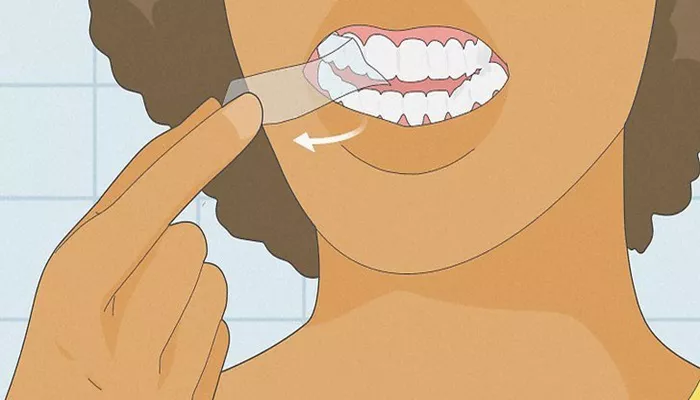Teeth whitening has become a popular cosmetic dental procedure, with many people opting for over-the-counter whitening strips as a convenient and affordable option. However, one question that often arises is whether the teeth should be dry when applying these strips. In this article, we will explore the importance of tooth dryness during the whitening process and provide guidance on how to achieve optimal results.
Tooth Dryness And Whitening
Tooth whitening works by using a bleaching agent, typically hydrogen peroxide or carbamide peroxide, to break down stains and discoloration on the tooth surface. The effectiveness of the whitening agent depends on several factors, including the concentration of the bleaching agent, the duration of contact with the teeth, and the overall health of the teeth.
When it comes to applying whitening strips, the question of tooth dryness arises because the strips are designed to adhere to the teeth and maintain contact with the whitening agent. If the teeth are wet or saliva is present, it can interfere with the adhesion of the strips and potentially dilute the whitening agent, reducing its effectiveness.
Preparing Your Teeth for Whitening Strips
Before applying whitening strips, it is essential to ensure that your teeth are clean and dry. Here are some steps to follow:
Brush your teeth: Gently brush your teeth with a soft-bristled toothbrush and fluoride toothpaste to remove any food debris or plaque.
Floss: Use dental floss to remove any trapped food particles between your teeth.
Rinse with water: Rinse your mouth thoroughly with water to remove any remaining toothpaste or debris.
Dry your teeth: Use a clean, dry cloth or paper towel to gently pat your teeth dry, ensuring that they are completely dry before applying the whitening strips.
SEE ALSO: How Long Should You Use A Teeth Whitening Light
Applying Whitening Strips
Once your teeth are clean and dry, you can proceed with applying the whitening strips. Follow the instructions provided with your specific whitening strip product, as application methods may vary. Generally, you should:
Remove the whitening strip from its packaging: Peel off the protective liner to expose the whitening gel.
Apply the strip to your teeth: Carefully place the whitening strip over your teeth, ensuring that it adheres securely and covers the desired area.
Avoid contact with gums: Be careful not to let the whitening strip touch your gums, as the bleaching agent can cause irritation or sensitivity.
Leave the strip in place: Keep the whitening strip in place for the recommended duration, typically 30 minutes or longer, depending on the product instructions.
Remove the strip: After the recommended time has elapsed, gently remove the whitening strip and discard it.
Rinse your mouth: Rinse your mouth thoroughly with water to remove any remaining whitening agent.
Maintaining Tooth Dryness During The Process
To ensure that your teeth remain dry during the whitening process, you can take the following precautions:
Avoid drinking or eating: Do not consume any food or beverages while the whitening strips are in place, as this can introduce moisture and interfere with the whitening process.
Breathe through your nose: If you need to breathe through your mouth while the strips are in place, try to minimize the amount of saliva produced.
Avoid touching the strips: Refrain from touching or adjusting the whitening strips with your tongue or fingers, as this can introduce moisture and disrupt the adhesion.
Potential Risks And Side Effects
While whitening strips are generally safe when used as directed, there are some potential risks and side effects to be aware of:
Tooth sensitivity: Some people may experience temporary tooth sensitivity or discomfort during or after the whitening process. This sensitivity is usually mild and resolves on its own within a few days.
Gum irritation: If the whitening strips come into contact with the gums, it can cause irritation or inflammation. Be sure to avoid letting the strips touch your gums.
Uneven results: If the whitening strips do not adhere properly or if there is inconsistent contact with the teeth, it can lead to uneven whitening results.
Damage to dental work: Whitening strips may not be effective on dental restorations such as fillings, crowns, or veneers, and can potentially cause damage to these materials.
If you experience any severe or persistent side effects, or if you have concerns about the safety or effectiveness of whitening strips, it is best to consult with your dentist.
Alternatives to Whitening Strips
If you find that whitening strips are not providing the desired results or if you prefer a different approach, there are several alternatives to consider:
Professional teeth whitening: Professional whitening treatments performed by a dentist typically use higher concentrations of bleaching agents and can provide more dramatic and long-lasting results.
Whitening toothpaste: Whitening toothpastes contain mild abrasives or chemical agents that help remove surface stains and discoloration. While they may not produce as dramatic results as whitening strips or professional treatments, they can be a good option for maintaining a brighter smile.
Veneers or crowns: For severe discoloration or staining that cannot be effectively treated with whitening, dental veneers or crowns may be an option. These restorations cover the visible surfaces of the teeth, creating a whiter, more uniform appearance.
Conclusion
Maintaining dry teeth is essential when applying whitening strips to ensure optimal adhesion and effectiveness of the bleaching agent. By following proper preparation and application techniques, you can achieve the best possible results from your whitening strips while minimizing potential risks and side effects. Remember to consult with your dentist if you have any concerns or if you are considering alternative whitening methods.

